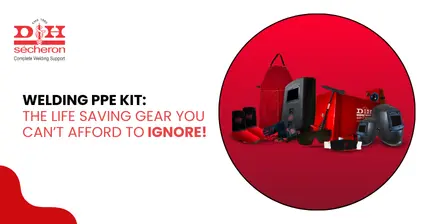The Perfect Weld: How to Choose the Right Flux Core Wire for Your Project
Introduction
When it comes to welding, the right choice of welding consumables can make all the difference in the quality and durability of your welds. Among the many options available, one of the most versatile and effective choices is flux core welding wire. For better understanding, let’s delve into the world of flux core wires and discuss how to select the perfect one for your project.
Understanding Flux Core Wire
Flux core welding wire is a type of welding consumable that contains a core of flux material. This wire is designed to be used with flux core welding processes, where the flux inside the wire creates a shielding gas when it melts. This gas protects the weld pool from atmospheric contaminants, resulting in cleaner and more stable welds.
Project-Specific Considerations
Choosing the right flux core wire starts with understanding the specific requirements of your welding project. Factors that should influence your decision are:
- Type of material
- Thickness of the metal
- Welding process
For instance, if you're working on stainless steel, you'll want to select a flux core welding wire that is specifically designed for stainless steel welding. These wires are formulated with the necessary alloys and flux compounds to ensure proper bonding and corrosion resistance.
Selecting the Right Diameter
Flux core welding wires come in various diameters, typically ranging from 0.030 inches to 0.045 inches, among others. The diameter you choose should be compatible with your welding equipment and the thickness of the material you're welding.
For thinner materials, a smaller diameter wire may be more suitable, while thicker materials may require a larger diameter wire to ensure proper penetration and strength in the weld.
Consider the Flux Composition
The composition of the flux core wire's flux is a critical factor in achieving the desired welding results. Different flux formulations are tailored for specific applications. For instance, some flux core wires are designed for all-position welding, while others are optimized for flat or horizontal welding.
Also, the flux composition can impact the appearance of the weld bead, the ease of slag removal, and the overall weld quality. Consult with welding experts or refer to the manufacturer's recommendations to choose the flux composition that best suits your project.
Quality Matters
When it comes to welding consumables like flux core welding wire, quality is paramount. It's essential to source your welding materials from reputable suppliers or manufacturers like D&H Sécheron to ensure that you're getting a product that meets industry standards.
A high-quality flux core wire will have consistent wire feedability, minimal spattering, and reliable arc stability. Investing in quality materials can lead to better weld performance and reduce the likelihood of defects or rework.
Conclusion:
Rather than compromising on quality, strive to make an informed choice for your welding project. Take your time in assessing your needs and consult welding experts, if necessary, to ensure that you're using the right welding consumables for the job. Whether you're welding stainless steel or any other material, the right flux core wire can help you achieve the perfect weld every time.
11 May 2025 | Welding
An In-Depth Exploration of Low-Alloy Steel: Your Comprehensive Guide
11 May 2025 | Welding
Nagpur - Bori - Tuljapur Road MSH-3 in Yavatmal District (Maharashtra)
11 May 2025 | Welding
Guidelines to Understand Gas Welding: Applications, Advantages & Disadvantages
11 May 2025 | Welding
3 Tips for Finding the Best Mild Steel Electrode for Your Application
11 May 2025 | Welding
How to Select the Right Welding Filler Wires for Stainless Steel Welding?
11 May 2025 | Welding
Building the Narendra Modi Stadium with Norma V and Autotherme-1 Electrodes
11 May 2025 | Welding
Low Alloy Steel Welding in a (PEB) Pre Engineered Building Structure
11 May 2025 | Welding
Welding Rods: Different Types and Tips for Properly Storing and Handling
11 May 2025 | Welding
Tips for Flawless Welds with Stainless Steel Electrodes: Pros and Cons
11 May 2025 | Welding
Exploring Applications and Benefits of Stainless Steel Welding Electrodes
11 May 2025 | Welding
Welding Basics: Joining Metals with Heat and Pressure - A Beginners Guide
11 May 2025 | Welding
Distinguishing Low-Alloy Steel from High-Alloy Steel: Understanding the Variations
11 May 2025 | Welding
Hard Facing Wire - Understanding the Process and Achieving Optimal Result
11 May 2025 | Welding
Exploring the Advantages of Stainless Steel Electrodes in Welding Applications
11 May 2025 | Welding
Weathering Steel vs. Traditional Steel: A Comparative Analysis of Performance
11 May 2025 | Welding
Choosing the Right Welding Rod: Why 6013 Electrodes Might Be Your Ideal Option
11 May 2025 | Welding
Why 7018 Electrodes Are Preferred for High-Strength Welds in Pipeline Construction
11 May 2025 | Welding
Filler Wire vs. Stainless Steel Filler Wire: Understanding the Key Differences
11 May 2025 | Welding
Exploring the Impact of Filler Material on Welding Quality and Durability
11 May 2025 | Welding
Choosing the Right Cast Iron Electrode for Different Welding Projects
11 May 2025 | Welding
Top Advantages of Cast Iron Electrodes for Industrial Welding Applications
11 May 2025 | Welding
Key Benefits and Challenges of Using TIG Welding in Industrial Projects
11 May 2025 | Welding
5 Reasons Why 7018 Electrode is the Gold Standard for Welding Professionals
11 May 2025 | Welding
Top 5 Advantages of Flux Cored Arc Welding for Heavy-Duty Applications.png)
11 May 2025 | Welding
Lotherme-601: A Game-Changer for Restoring Shoulder Pins in Heavy Machinery
11 May 2025 | Welding
How D&H Sécheron Helped Repair a Rotary Kiln’s Cooler Section with LoTherme 352
11 May 2025 | Welding
Piston Repair for Mining Industry: Cost-Effective Solutions with LoTherme 468.webp)






.jpg)







































.jpg)
.jpg)

.jpg)

.jpg)





.jpg)
.jpg)
.jpg)



.webp)
.jpg)
.jpg)
.webp)
.jpg)






















.png)



.webp)

.webp)
.webp)



